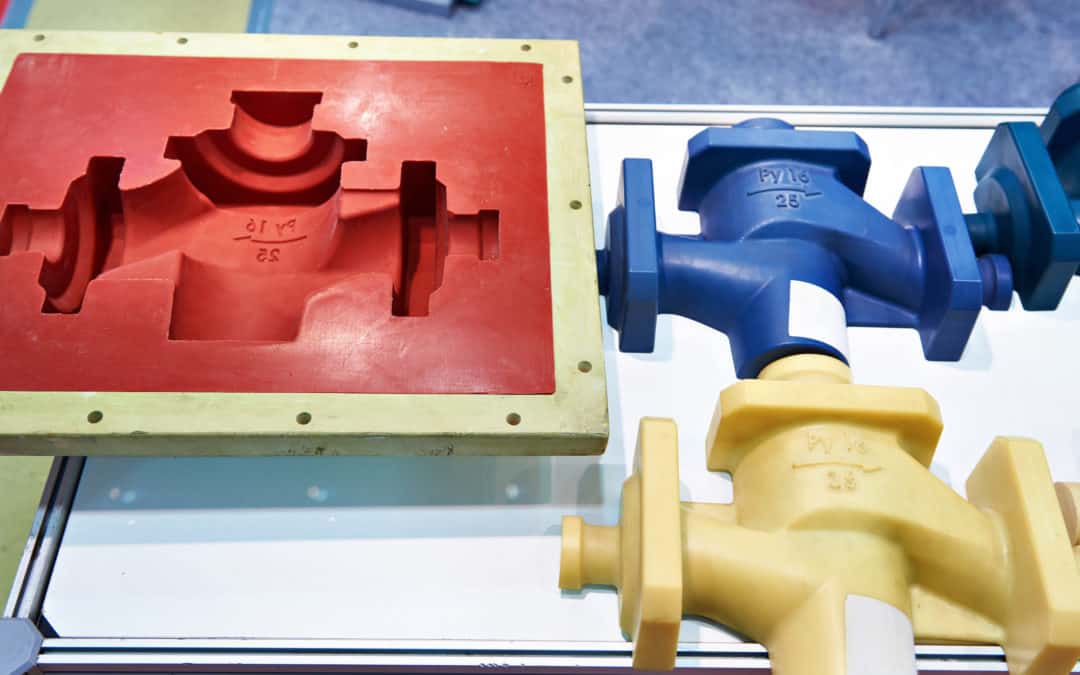You can improve the workflow of your next project by learning how to work with non-stick mold release coatings.
In the past, molders typically faced problems with delivering consistent results using metal molds. Sometimes, molders couldn’t get their work to release at all.
Since those days, molders have learned to use non-stick mold release coatings. In the beginning, mold release coatings were made of semi-permanent solvents.
Today, this kind of semi-permanent solution is still in heavy use.
Popular Mold Release Agents
Now, molders – like the rest of society – want to do their part to help the environment. Resultantly, more molders use water-based non-stick release agents for their work.
For example, Teflon is a household name. Many consumers own Teflon coated cooking products.
Molders use a range of Teflon products as a coating for their molds. For nearly every rotational molding application, there’s a durable, non-stick Teflon mold release solution.
Molders use high release coatings in most cases. In these instances, warpage becomes a problem when working with large, flat surfaces. Molders must establish a feel for working with high release coatings to minimize warpage.
To prevent warping, some molders use medium release solutions for their work. However, they must still have a feel for working with this kind of coating, although to a lesser degree.
Eventually, engineers developed low release coatings. This coating contains a metal filler that enhances its thermal properties.
The increase in thermal conductivity of low release coating helps parts to cure faster compared to low- and high release coatings. Therefore, it’s important not to cure molds with different coatings without adjusting for this variable.
Low release coatings help molders overcome issues such as warpage. It also helps them to produce goods with a high sheen. Low release, high sheen coatings enable molders to create the highest level of gloss on plastic parts.
Molders also use custom-made hybrid mold release coatings. When doing this, they’ll coat different areas of the mold with high, low or medium release coating. This practice enables them to take advantage of the best properties of each kind of coating.
Applications for Mold Release Coatings
The application makes a big difference in the quality and consistency of molded products. For example, asphalt releasing agents eliminate stripping that happens when black asphalt meets compounds that can cause damage, such as potholes and other failures.
In construction, workers use form release agents to prevent freshly laid concrete from sticking to wooden forms. This kind of release agent works by using a chemical that reacts with the concrete. The reaction enables workers to use the compound without leaving residue on the concrete surface.
Most people are familiar with the releasing agents used for cooking. In the food industry, release compounds have replaced natural solutions such as flour or animal fat.
The process is called bakery release. It may involve using a grease-proof paper or a silicone-based release coating.
Molders commonly use mold release coatings for metalwork. They use release coatings with a range of metals, including:
- Aluminum
- Aluminum alloy
- Magnesium
- Zinc
- Zinc alloy
- Other metals
In the paper industry, workers use release agents to produce large paper rolls. This practice creates a slip effect during the papermaking process. In plastics, molders use plastic film to prevent adhesives from bonding to the surface of the finished products.
Molders who work with rubber use silicone-based release agents frequently. Silicone-based release agents are helpful because of its lubricating properties.
It keeps the rubber from sticking to the mold. Alternatively, molders may use a silicone release agent to slide rubber over hot molds as they load their work.
Sometimes, silicone can create a barrier between the rubber and the mold for some applications. In this instance, molders use a non-silicone-based mold release agent.
Eco-Friendly Releasing Agents
Water-based mold release coatings are durable and typically permanent. They’re also slick and provide a protective coating.
Some mold release agents require molders to reapply compound several times during production. During production, mold release agents that workers must reapply can create a barrier between the mold and the product. Because of this, workers must clean the mold repeatedly before completing the final product.
Water-based solutions help molders overcome this issue. There is no silicone in the solution, so a barrier doesn’t transfer to the mold.
As a result, molders can create cleaner products easily. Furthermore, they can avoid hazardous oils and harmful agents. Also, water-based solutions are less harmful to the environment.
High-Temperature Applications
High-temperature mold release agents increase the efficiency of working with metals such as steel, copper, brass and aluminum. The properties of high-temperature release agents enable molders to create permanent, non-stick mold surfaces with a low coefficient of friction.
Molders can modify coatings to meet the application’s thermal or electrical conductivity needs. Because of this, they can use it for various deliverables, such as:
- Bag formers
- Bearings
- Dies
- Gears
- Injection molds
- Low molds
- Seal bars
- Tablet punches
The superior resistance of high-temperature release agents also makes it ideal for working with plastic and other materials where abrasiveness can ruin a project.
Which Mold Release Coating Is Right for Your Application?
Manufacturers use mold release coatings for a range of applications. As a business owner, can apply mold release coatings for a variety of purposes. Hopefully, this overview of non-stick release agents has given you an idea of ways to improve your molding workflow.
If you want to change your molding process, it can prove difficult to figure out the best way to move forward. Performance Engineered Components consulting can help you rework your production run quickly.
Our knowledgeable consultants are standing by 24 hours a day. Contact us today to learn how to improve your workflow and create better deliverables.

